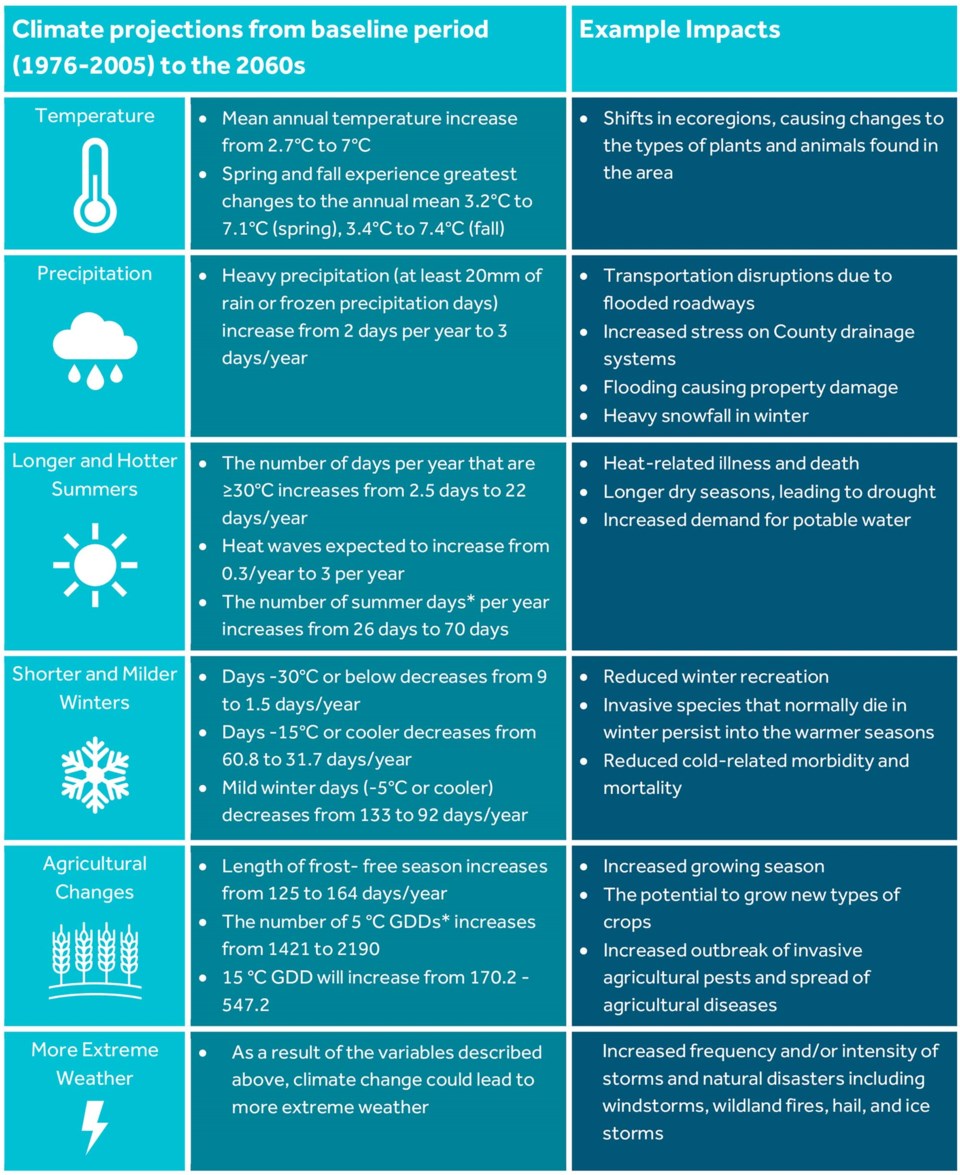Sturgeon County could see 10 times as many heat waves by 2060 due to global heating, a new study suggests.
Sturgeon County council voted 5-1 (Coun. Matthew McLennan opposed, Coun. Neal Comeau absent) in favour of accepting the Climate Adaptation Action Plan during a committee of the whole meeting June 14.
Last fall, Sturgeon County became one of Alberta’s two successful applicants to the Municipal Climate Change Action Centre’s Climate Adaptation Challenge program. (The other was St. Albert.) The program aims to help municipalities create a plan to address future risks posed by climate change.
“Climate change is a challenge we as a society are facing today,” MCCAC climate adaptation specialist Elise Renchko told council, but it also presents opportunities.
The future: heat
The plan used the Climate Atlas of Canada to project climate trends around Morinville and Sturgeon County out to 2060 under a business-as-usual scenario where the world makes no substantial efforts to reduce greenhouse-gas emissions. Analysts worked with county staff and residents to determine what threats and opportunities these climate shifts present, which are of greatest concern, and what steps the county should take in the next five years to address them.
The plan projects a 4.3 C increase in Sturgeon County’s average annual temperature by 2060 relative to the recent past (1976-2005), which would likely shift plant and animal distributions in the region. Sturgeon would also see more extreme rain events, getting about three days of heavy precipitation (+20 millimetres in a day) compared to the two it had in the recent past, which would result in more flooded roads.
The plan found that Sturgeon County would experience 22 days of +30 C weather a year by 2060, compared to the 2.5 days it had in the recent past. It would also get three heat waves (periods of three or more days of +30 C) a year — 10 times the amount it had in the recent past. This heat would likely lead to more drought and heat-related illness.
Hotter summers mean warmer winters. Sturgeon County would have just 1.5 days of -30 C or below weather by 2060 compared to the nine of the recent past, and 39 more frost-free days. While this could allow farmers to grow new crops, it could also mean less winter recreation and more invasive bugs surviving the winter.
Adaptation actions
The plan flagged water shortages, heat waves, invasive farm pests, drought, smoke, fire, and floods as the top climate threats in Sturgeon, with increased agricultural productivity as the top opportunity.
The plan includes a prioritized list of 26 actions the county should take to adapt to climate change. Administration should create a tree inventory to determine how natural areas can mitigate floods, and build more water storage tanks to address water shortages. The county should partner with towns to create clean air shelters for smoky days and encourage farmers to get into permaculture. Renchko said many county residents want the county to explore using reclaimed water for non-potable purposes.
The plan recommends the county implement its high-priority actions by 2027 and update the plan every five years.
McLennan opposed the plan, saying it did not have the academic rigor he wanted.
In an interview, Sturgeon County Mayor Alanna Hnatiw said the county has already seen the impacts of climate change in the form of a record-setting drought last year and record-setting floods the year before.
“Obviously, extreme weather is becoming an issue,” she said, and the county must consider its effects on flood mitigation, building standards, and emergency response.
Hnatiw said county staff will use this plan to plan future climate mitigation and adaptation efforts.
The plan can be found at bit.ly/3tx9Yxh.




